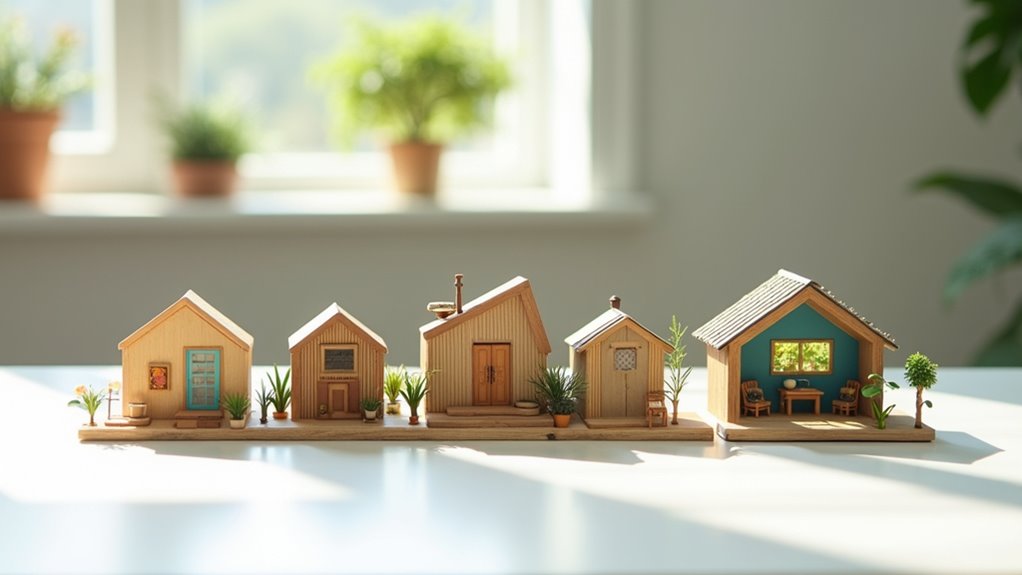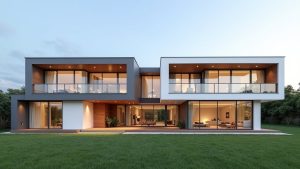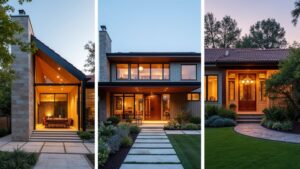Designing a low-budget house can be both smart and stylish with these five ideas. Opt for simple rectangular layouts to cut material waste. Choose affordable rural land for lower costs. Use reclaimed wood or bamboo for budget-friendly charm. Streamline labor with modular construction to save time and money. Finally, maximize energy savings with south-facing windows and LED lighting. There’s much more to explore for crafting a cost-effective, cozy home with clever strategies.
Key Takeaways
- Opt for square or rectangular layouts to minimize material waste and reduce construction costs.
- Use reclaimed materials like salvaged wood to save 20-25% on expenses.
- Choose simple gable roofs to lower design and labor costs effectively.
- Implement open floor plans with strategic windows for natural light and airflow.
- Build two-story designs to maximize space and cut foundation expenses.
Smart Planning for Cost-Effective Layouts
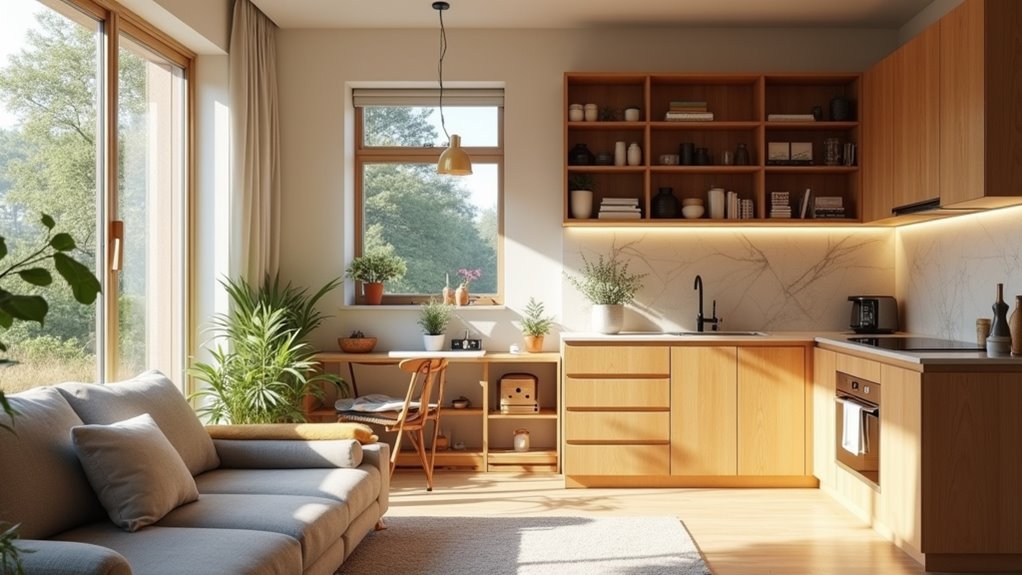
Crafting a cost-effective house design begins with smart planning, where every decision shapes both the budget and the functionality of the home. Opting for square or rectangular layouts minimizes material waste and simplifies labor, while a straightforward gable roof curbs expenses on complex designs. Standard-sized windows and doors further trim costs, blending affordability with practicality.
Beyond structural choices, efficient space utilization transforms modest footprints into spacious havens. Open floor plans erase unnecessary walls, enhancing airflow and light. Strategic window placement maximizes natural illumination, complemented by smart lighting systems that reduce energy bills with dimmable, motion-sensor options. Multi-functional rooms adapt to evolving needs, while built-in storage optimizes vertical space. Privacy considerations guide the layout, ensuring bedrooms are tucked away from noisy common areas. Inspired by innovative designs like the Greenwich Home Handover, compact footprints can still offer generous comfort despite their size. Incorporating two-story designs can also maximize land use, making them ideal for smaller lots and reducing overall foundation costs.
Choosing Affordable Building Locations

Where does the journey to a low-budget home truly begin? It starts with selecting the right location, a decision that can make or break a budget. Land zoning plays a pivotal role, as regulations dictating residential, commercial, or agricultural use directly impact price. Areas with restrictive zoning often carry steeper costs, so seeking rural or less-regulated zones can yield savings.
Equally critical are permit fees, which vary widely by municipality, ranging from modest sums to over a thousand dollars for inspections alone. Beyond regulations, consider land characteristics—flat, accessible plots near utilities reduce development expenses compared to sloped or remote terrain.
Exploring irregular lots or tax auctions can uncover hidden gems at lower prices. Finally, researching local market dynamics and future development plans ensures long-term value. With strategic location scouting, one can lay a frugal foundation for their dream home.
Selecting Budget-Friendly Materials
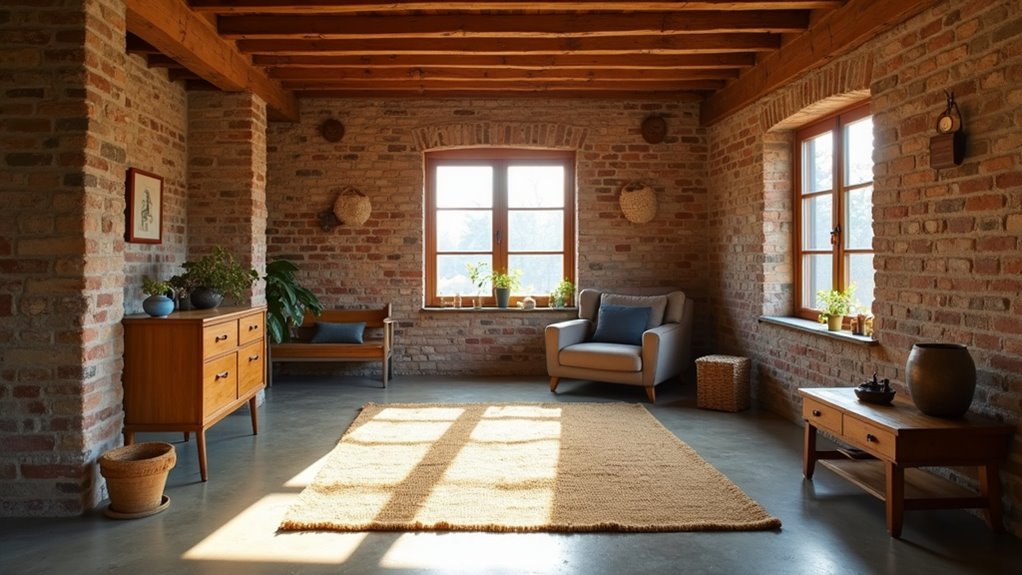
Embarking on the path to a low-budget home, one must prioritize the selection of cost-effective materials that balance affordability with durability. Opting for reclaimed materials and recycled options, such as salvaged wood or bricks, can slash costs by 25% or more while adding unique, rustic charm to a space.
Building a low-budget home starts with choosing affordable, durable materials like reclaimed wood and bricks, cutting costs by 25% while adding rustic charm.
These materials, sourced from salvage yards or demolition sites, also reduce landfill waste and conserve resources, blending eco-consciousness with savings.
For practical inspiration, consider these budget-friendly choices:
- Reclaimed Wood: Transform old lumber into stunning flooring or accent walls, saving money and embracing character.
- Recycled Bricks: Build durable, charming facades at 20-40% less than new bricks, with a story in every piece.
- Bamboo: Use this renewable, sturdy material for structural elements or decor, keeping costs low.
Additionally, alternatives like fly ash bricks or hollow concrete blocks offer affordability and insulation, ensuring a sturdy, economical build.
Streamlining Construction and Labor Costs

Building there, let’s dive into streamlining construction and labor costs, a crucial aspect of building a low-budget home. Simplifying design with rectangular layouts, basic gable roofs, and open floor plans cuts material and labor expenses while maximizing space. Two-story designs further reduce foundation and roofing costs compared to sprawling single-story homes.
Optimizing on-site labor involves clear task scheduling and matching workers to their skill sets to boost productivity and minimize errors.
Embracing prefabrication benefits, such as modular construction, slashes labor costs by up to 25%, speeds timelines by 50%, and curbs material waste. Meanwhile, effective project management strategies, like using software for real-time tracking and the Critical Path Method for resource allocation, prevent delays and overspending.
Early site assessments and permits also avoid costly rework. By blending technology, training, and innovative methods, homeowners can craft their dream space without breaking the bank.
Maximizing Energy Savings With Efficient Design
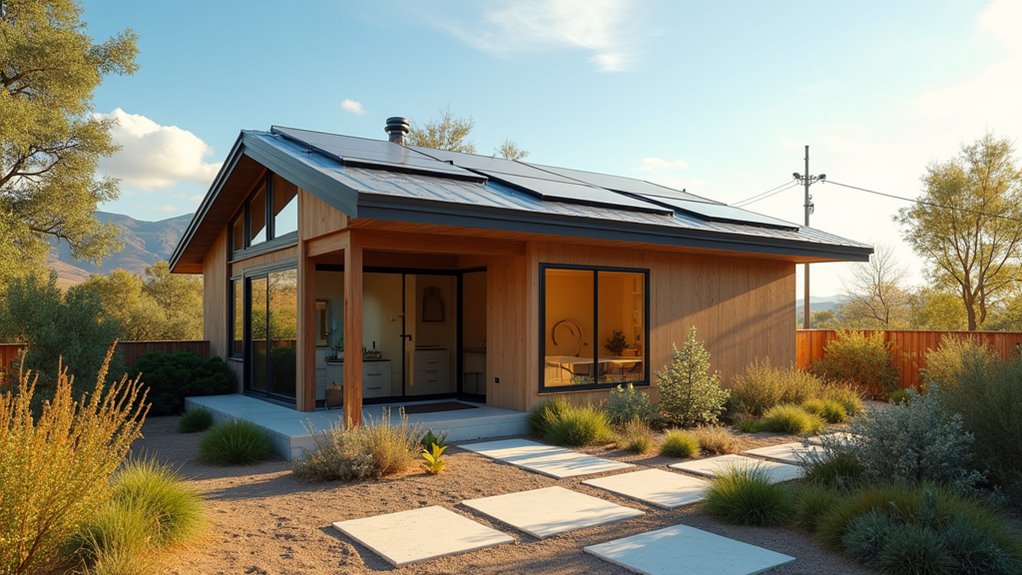
As the focus shifts to maximizing energy savings with efficient design, homeowners can transform their low-budget homes into bastions of sustainability without sacrificing comfort. By embracing passive solar design, they can orient south-facing windows to capture winter warmth while using overhangs to block summer heat.
Super-insulation and air sealing in the building envelope further slash heating and cooling costs by up to 50%.
Practical steps to enhance efficiency include:
- LED Lighting: Swap old bulbs for LEDs, cutting energy use by 75-90% and saving around $225 yearly.
- Solar Panel Integration: Harness renewable energy with affordable solar setups to power homes and trim bills.
- Rainwater Harvesting: Collect and reuse rainwater for irrigation, reducing water costs and environmental impact.
Additionally, ENERGY STAR appliances and smart power strips curb electricity waste, while reflective roofing keeps homes cooler. These strategies ensure eco-friendly living on a budget.
